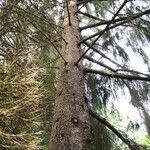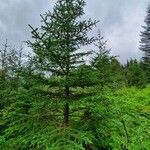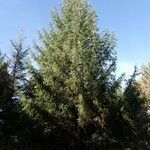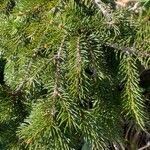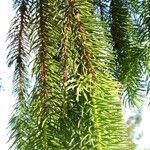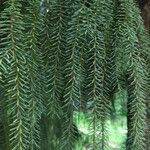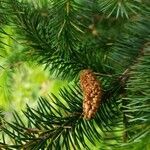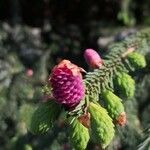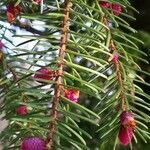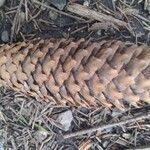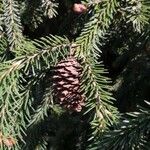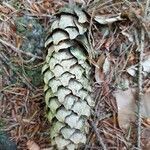A very large tree. It grows to 55 m high and the trunk can be 200 cm across. The trunk is very large and often has buttresses at the base. The leaves are straight and flattened. They are 20-30 mm long. They are keeled underneath and have a sharp point. They are yellowish-green on the upper surface. There are prominent lines of white dots underneath. The needles tend to be at right angles to the twigs. The cones are broad and like a cylinder. They are 5-10 cm long. The scales are yellow to light brown. They are thin and brittle. They are loose fitting. They are broadest near the middle. They are wavy, irregular and toothed along the edge. Cones open in autumn and shed in the months following. The seeds are reddish-brown.
Large tree, pyramidal when young; bark dark reddish brown, exfoliating in thin scales. Shoots light brown or yellowish brown when young, glabrous, grooved; lf pegs very prominent after lvs fall. Buds ovoid, glabrous, very thinly resinous. Lvs 1-2.3 cm long, strongly flattened, pungent-pointed, sweetly scented, ± sloping forwards on upper side of shoot; lower surface with c. 10 glaucous stomatal bands; upper surface shining, sometimes with 1-2 often broken rows of stomata. ♂ strobili yellow. Mature ♀ cones mostly 3.5-5.5 cm long, broadly cylindric-oblong; ovuliferous scales ovate-oblong, thin, flexible, becoming erose towards apex; bracts small, scarcely 1/2 as long. Seed with wing at least 3× length of seed body.
